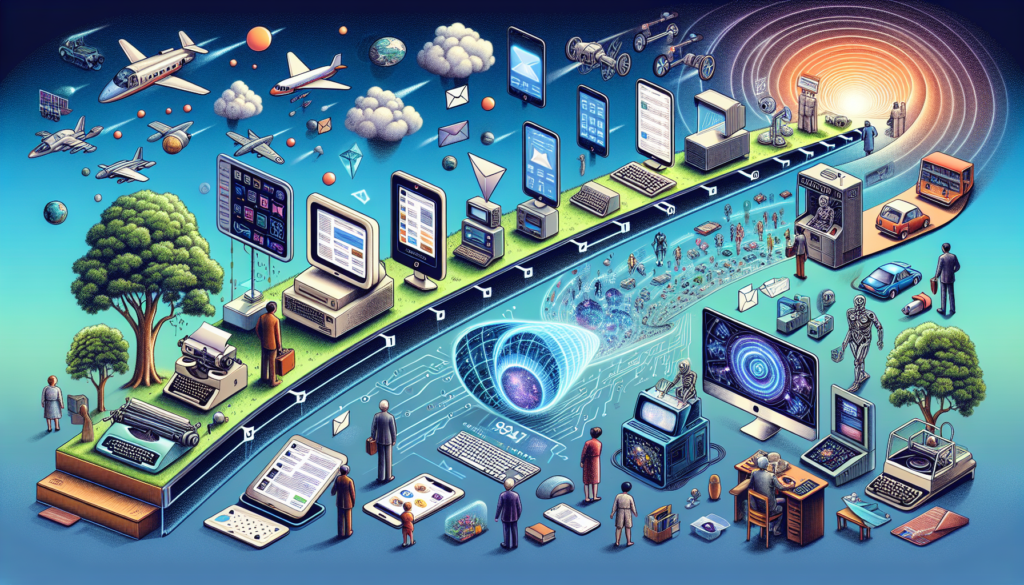Imagine a world where every email you receive is not a nuisance, but a personalized and engaging message that sparks your interest. A world where marketers have perfected the art of capturing your attention and delivering value straight to your inbox. This article explores the potential of email marketing, dissecting its past successes and present challenges while uncovering the secrets to its future potential. Step into this digital journey with us as we unravel the future of email marketing and how it could change the way we connect and engage with brands.
The Future of Email Marketing
Consumer Behavior and Email Marketing
In the fast-paced digital world we live in, consumer behavior is constantly evolving. While some may argue that email marketing is becoming less relevant, the truth is that it still remains one of the most effective marketing channels. People still check their emails daily, and studies show that email is a preferred method of communication for many adults. However, to succeed in email marketing, it is crucial to stay in tune with changing consumer behavior.
Personalization and Segmentation
One of the key factors in the future of email marketing is personalization. Gone are the days of generic mass emails. Today’s consumers expect tailored content that speaks directly to their needs and interests. Personalization allows you to create a more engaging and targeted email campaign that can increase open rates, click-through rates, and ultimately conversions.
Segmentation is closely tied to personalization. By dividing your email list into relevant segments based on demographics, preferences, or behavior, you can create more targeted messages that resonate with each recipient. This level of customization not only enhances the user experience but also boosts the effectiveness of your email campaigns.

Mobile Optimization
The rise of smartphones has undoubtedly changed the way people interact with their emails. With more than half of all email opens occurring on mobile devices, it is crucial to optimize your emails for mobile viewing. Responsive design, which ensures that emails adapt seamlessly to different screen sizes, is essential for providing a user-friendly experience.
Mobile optimization goes beyond just design considerations. It also means understanding the mobile user’s behavior and adapting your email content accordingly. For example, shorter and more concise subject lines that capture attention quickly are preferred on mobile devices. Furthermore, incorporating mobile-friendly call-to-action buttons is important to streamline the conversion process.
Interactive Emails
To capture the attention of today’s consumers and stand out in a crowded inbox, interactivity is becoming a key trend in email marketing. Interactive elements such as quizzes, polls, and sliders make emails more engaging and encourage recipients to actively interact with the content. This not only helps to increase click-through rates but also provides valuable data and insights that can be used for future campaigns.
Interactive emails can also include features like countdown timers, which create a sense of urgency and prompt immediate action. Additionally, incorporating interactive product showcases or personalized video content can provide a more immersive and memorable experience for the recipient.

Artificial Intelligence and Automation
Artificial Intelligence (AI) is revolutionizing email marketing by enabling advanced automation and personalization at scale. AI-powered tools can analyze vast amounts of data to identify patterns, segment audiences, and provide personalized recommendations. This allows for highly targeted and relevant email campaigns that resonate with individual recipients.
Automation is another crucial aspect of the future of email marketing. By setting up automated workflows, you can send timely and personalized emails triggered by specific actions or events, such as welcome emails, abandoned cart reminders, or birthday offers. Automation not only saves time and effort but also ensures that your email marketing is always relevant and timely.
Integration with Other Marketing Channels
Email marketing does not exist in a vacuum. To stay ahead of the competition, it is important to integrate your email campaigns with other marketing channels. By aligning your email efforts with social media, content marketing, and other digital channels, you can create a cohesive and impactful customer experience.
For example, you can use social media buttons in your emails to encourage recipients to follow you on various platforms, resulting in increased social engagement and brand exposure. Similarly, you can leverage your content marketing efforts by sharing blog posts or other valuable content directly through email. By integrating your marketing channels, you can amplify your message and ensure consistent branding across multiple touchpoints.
Data Privacy and GDPR Compliance
With growing concerns over privacy and data protection, email marketers must prioritize data privacy and comply with regulations such as the General Data Protection Regulation (GDPR). Building trust with your subscribers is crucial for the success of your email marketing campaigns.
To ensure compliance, it is important to obtain explicit consent from subscribers, clearly outline how their data will be used, and provide options for opting out at any time. Additionally, implementing robust security measures to protect subscriber data and regularly reviewing your privacy practices are essential to maintaining a strong relationship built on trust.
Email Metrics and Analytics
As with any marketing strategy, tracking and analyzing the performance of your email campaigns is vital for success. Email metrics such as open rates, click-through rates, and conversion rates provide valuable insights into the effectiveness of your campaigns and help you make data-driven decisions.
By leveraging advanced analytics tools, you can dig deeper into your email data to understand subscriber behavior, preferences, and engagement patterns. This allows you to refine your strategies, optimize your campaigns, and improve overall performance.
Email Deliverability and Anti-Spam Measures
In an era of overflowing inboxes and stringent spam filters, email deliverability remains a critical concern for email marketers. Ensuring that your emails reach the intended recipients’ inboxes is essential for the success of your campaigns.
To improve email deliverability, it is important to follow best practices such as maintaining a clean email list, regularly monitoring and resolving deliverability issues, and optimizing sender reputation. Additionally, avoiding spam triggers and using authentication protocols such as Sender Policy Framework (SPF), DomainKeys Identified Mail (DKIM), and Domain-based Message Authentication, Reporting, and Conformance (DMARC) can help establish credibility and increase the chances of landing in the inbox.
Emerging Email Marketing Technologies
The future of email marketing is ripe with exciting technological advancements that will continue to shape the landscape. From AI-driven personalization to enhanced automation capabilities, these technologies will further empower email marketers to connect with their audiences in more impactful ways.
Emerging technologies like machine learning and predictive analytics hold great potential for optimizing email campaigns and driving better results. By leveraging these technologies, email marketers can gain a deeper understanding of their audience, deliver more relevant content, and predict future behavior based on past interactions.
In conclusion, while the digital landscape may constantly evolve, email marketing still holds significant value. By embracing personalization, optimizing for mobile, incorporating interactivity, leveraging AI and automation, integrating with other marketing channels, prioritizing data privacy, analyzing metrics, ensuring deliverability, and adopting emerging technologies, email marketers can stay ahead of the curve and continue to drive success in their campaigns. So, yes, there is a bright future for email marketing, and it is up to you to seize the opportunities it presents.











